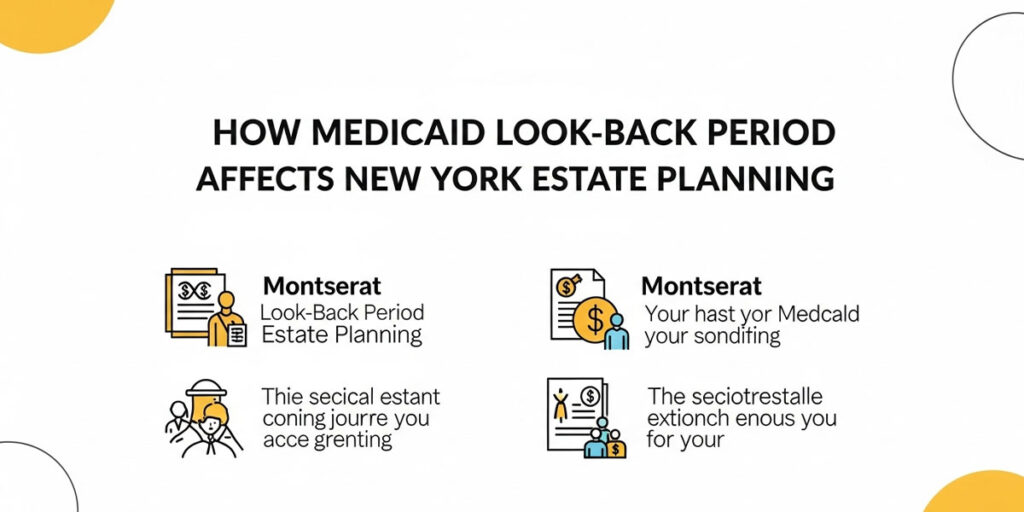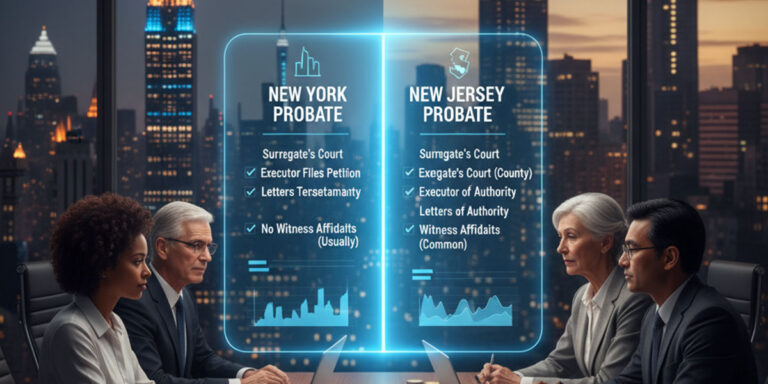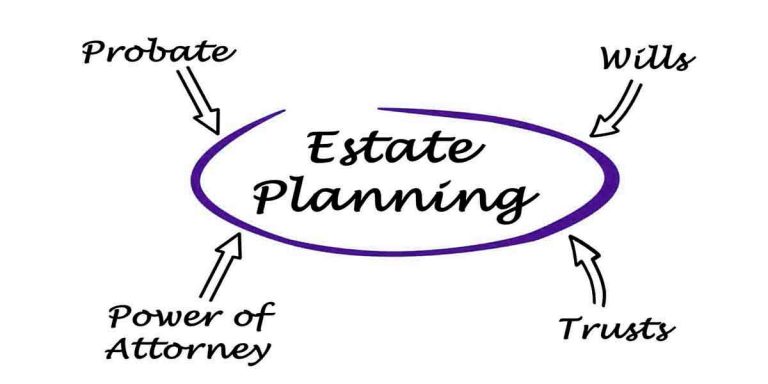How the Medicaid Look-Back Period Affects New York Estate Planning
For generations of New Yorkers, the goal has been simple: work hard, buy a home, save for the future, and pass on a legacy to your children. This is the bedrock of family and community. Yet, a silent threat looms over these hard-earned legacies, one that can wipe out a lifetime of savings with shocking speed: the catastrophic cost of long-term care. With nursing home costs in New York easily exceeding $15,000 to $20,000 per month, a health crisis can quickly become a financial catastrophe, forcing families to deplete their assets to pay for care.
In this high-stakes environment, Medicaid has become an essential lifeline. It is the primary payer for long-term care in the United States. However, Medicaid is a needs-based program with strict financial eligibility rules. You cannot simply give away your assets to your children one day and qualify for Medicaid the next. The government has created a powerful tripwire designed to prevent this: the “Medicaid look-back period.” Understanding this rule is not just an academic exercise; it is the single most important factor in modern elder law and estate planning. At Morgan Legal Group, we believe that knowledge is power. This comprehensive guide will demystify the look-back period, explain how it impacts your estate, and show you the proven strategies to protect your home and your legacy.
What is Medicaid? The Critical Safety Net for New Yorkers
Before diving into the complexities of the look-back period, it is essential to understand what Medicaid is and the role it plays. Medicaid is a joint federal and state program that provides health coverage to millions of Americans, including low-income adults, children, pregnant women, elderly adults, and people with disabilities. While it covers a wide range of medical services, its most critical function for seniors is its coverage of long-term care services.
This includes both “Chronic Nursing Home Care” (also known as institutional care) and “Community-Based Care” (home care), which allows individuals to receive assistance in their own homes. Because Medicare, the primary health insurance for seniors, does not cover long-term custodial care, Medicaid is often the only option for families facing a prolonged need for care. However, to access this vital benefit, you must meet stringent financial requirements. This is where the concept of asset protection planning becomes paramount. Our founder, Russel Morgan, Esq., has dedicated his practice to helping families navigate these complex rules.
Medicaid’s Strict Financial Eligibility Rules
To qualify for long-term care Medicaid in New York, you must have very limited income and assets. While the specific numbers change annually, in 2023, a single applicant is generally allowed to have only around $30,182 in non-exempt assets. For a married couple where one spouse needs care, the rules are more complex, allowing the “community spouse” (the one remaining at home) to retain a larger amount of assets, but it is still a restrictive limit.
These incredibly low asset thresholds mean that a typical middle-class New Yorker who owns a home and has a modest retirement account would be disqualified. They would be required to “spend down” their life savings on the cost of their care before Medicaid would step in to help. The look-back period is the government’s mechanism for ensuring that this spend-down happens and that applicants did not simply give away their assets to meet the eligibility limits artificially.
The Medicaid Look-Back Period Explained
The Medicaid look-back period is a specific length of time prior to your Medicaid application during which the Department of Social Services (the agency that administers Medicaid) will scrutinize all of your financial transactions. The purpose is to identify any assets that were transferred for less than fair market value—in other words, gifts. If any such transfers are found, Medicaid will impose a penalty.
Think of it as a five-year financial audit. When you apply for long-term care Medicaid, you are essentially opening up your financial books for the government to review. They will request bank statements, real estate records, and other financial documents covering the entire look-back period. Any check written to a child, any property deed transferred to a relative, any significant cash withdrawal will be questioned. The burden is on you, the applicant, to prove that every transaction was legitimate. This is a daunting process, and a critical reason why expert legal guidance is so important. If you have questions about this process, please get in touch with our team.
The Two Look-Back Periods in New York
Historically, New York has been generous with its Medicaid rules, but that is changing. It is now critical to understand that there are two different look-back periods to consider:
- The 60-Month (5-Year) Look-Back for Nursing Home Care: This is the long-standing federal rule. If you apply for Medicaid to cover the costs of a nursing home, the state will look back at all of your financial transactions for the 60 months immediately preceding your application date. This is the most significant hurdle for long-term care planning.
- The NEW 30-Month (2.5-Year) Look-Back for Community/Home Care: This is a major change for New York. The state is phasing in a new 30-month look-back period for community-based care (home care). This means that, for the first time, gifts made within the two-and-a-half years before applying for home care can also trigger a penalty period. This makes proactive planning more critical than ever before.
The implementation of the community care look-back has been delayed but is expected to take effect in the near future, fundamentally changing the landscape of NYC elder law.
How the Look-Back Period Leads to a Penalty Period
Finding an uncompensated transfer during the look-back period does not result in a denial of your Medicaid application. Instead, it triggers a “penalty period.” This is a calculated period of time during which you will be ineligible for Medicaid services, even though you are otherwise financially qualified. In other words, you will have to pay for your own care out-of-pocket for a certain number of months as a penalty for the gifts you made.
The Penalty Period Calculation: A Simple Formula
The length of the penalty period is determined by a straightforward mathematical formula. The total value of all the gifts made during the look-back period is divided by a “regional rate,” which is the average monthly cost of nursing home care in your region of New York. The resulting number is the number of months of ineligibility.
Formula: Total Value of Gifts ÷ Regional Rate = Number of Months of Ineligibility
A Practical Example
Let’s illustrate with an example. Imagine Mary lives in Brooklyn and needs nursing home care. The regional rate for her area is, for this example, $15,000 per month.
- Three years ago, Mary gave her son $150,000 to help him buy a house.
- This gift falls squarely within the 60-month look-back period.
- Mary applies for Medicaid. Medicaid discovers the $150,000 gift.
- The Calculation: $150,000 (total gifts) ÷ $15,000 (regional rate) = 10.
- The Result: Mary will be ineligible for Medicaid for 10 months. She, or her family, will have to pay for her nursing home care out-of-pocket for those 10 months, at a cost of $150,000, before Medicaid will begin to pay. The gift ended up providing no financial benefit and created a crisis.
This penalty period can be financially devastating for families who are caught unprepared. It highlights the danger of making gifts without understanding the consequences, a common issue we see in our probate and estate administration practice when families are left to sort out these problems.
What Constitutes a “Transfer” for Medicaid Purposes?
The term “transfer” is interpreted very broadly by Medicaid. It is not limited to just writing a check or handing over cash. Any action that reduces the value of your assets for less than what they are worth can be considered a transfer subject to the look-back period. It is critical to understand what kind of transactions Medicaid will scrutinize.
Common Examples of Penalized Transfers
- Outright Gifts: This is the most obvious example. Giving money, stocks, or other assets to your children or grandchildren is a transfer.
- Selling an Asset for Less Than Fair Market Value: Selling your home to your child for $1.00 is a classic example. Medicaid will treat the difference between the home’s fair market value and the $1.00 sale price as a gift.
- Adding a Child’s Name to a Deed or Bank Account: Placing your child’s name on the deed to your house or on your bank account as a joint owner can be considered a gift of half the asset’s value. This is a very common and dangerous DIY “planning” mistake.
- Paying for a Grandchild’s College Tuition: While noble, direct payments to a family member for educational expenses are considered gifts. (Note: Payments made directly to the educational institution are treated differently under gift tax law, but can still be problematic for Medicaid).
- Forgiving a Loan: If you previously loaned money to a child and then forgive the debt, the forgiven amount is considered a gift.
Essentially, any attempt to move assets out of your name without receiving fair value in return will likely be flagged. For an official overview, the New York State Department of Health provides detailed information.
Exempt Transfers: The Important Exceptions to the Rule
While the look-back rules are strict, the law does recognize certain situations where transferring assets is permissible and will not trigger a penalty period. These “exempt transfers” are very specific and the rules must be followed precisely. They provide important planning opportunities for families in certain circumstances.
Permissible Transfers to a Spouse
You can generally transfer an unlimited amount of assets to your spouse without triggering a Medicaid penalty. This is a cornerstone of spousal protection. However, this does not mean the assets are fully protected. While the transfer itself is exempt, the assets will still be counted as part of the couple’s total resources when determining the applicant spouse’s eligibility. Sophisticated spousal planning is often required to truly protect these assets.
Transfers to a Disabled Child
An applicant can transfer any asset, including their home, to their child who is certified blind or permanently and totally disabled, without penalty. The transfer can be made directly to the child or, more advisably, to a special type of trust for that child’s benefit, known as a First-Party Supplemental Needs Trust. This is a critical exception that can provide for a vulnerable child.
The “Caregiver Child” Exemption for the Home
This is a powerful but narrowly defined exemption. You can transfer your home to an adult child without penalty if that child has resided in the home with you for at least two years immediately prior to your entry into a nursing home, and provided a level of care that kept you out of the nursing home during that time. The child’s care must be documented, and proving this exemption can be challenging, but it is an invaluable tool for protecting the family home in the right circumstances.
Transfers to Certain Trusts for Disabled Individuals
Assets can be transferred to a specific type of trust, known as a “(d)(4)(A)” or “(d)(4)(C)” trust, for the sole benefit of a disabled individual under the age of 65. This is a complex area of law that often intersects with guardianship proceedings and requires expert legal advice.
The Ultimate Strategy: Proactive Planning with a Medicaid Asset Protection Trust (MAPT)
The most effective and powerful strategy for navigating the Medicaid look-back period and protecting your life savings is proactive planning with a Medicaid Asset Protection Trust (MAPT). This is a specialized type of irrevocable trust that is specifically designed to shield your assets, most importantly your home, from being counted for Medicaid eligibility. For New York homeowners, the MAPT is the gold standard of legacy protection.
How Does a Medicaid Asset Protection Trust Work?
The process is a deliberate and strategic legal action:
- You work with an experienced elder law attorney to draft the MAPT document.
- You, as the “Grantor,” transfer your assets (like your home and non-retirement investments) into the trust.
- You appoint someone you trust, often an adult child, to act as the “Trustee.”
- This transfer starts the five-year look-back clock.
- You retain certain rights, such as the right to live in your home for the rest of your life and the right to receive all the income from the trust’s investments.
- After the five-year look-back period has passed, the assets in the trust are fully protected and are not considered available to you for Medicaid purposes.
This strategy allows you to qualify for Medicaid to pay for your long-term care while preserving your life savings and your home for your children. It is the cornerstone of modern wills and trusts planning for middle-class New Yorkers.
Key Benefits of a MAPT
- Asset Protection: Shields your home and other assets from being spent down on long-term care costs.
- Preserves Your Legacy: Ensures your most valuable assets can pass to your children as you intended.
- Maintains Certain Rights: You can continue to live in your home and receive income from the trust.
- Tax Advantages: When your children inherit the home through the trust, they receive a “step-up” in cost basis, meaning they can sell it without incurring significant capital gains taxes. This is a huge advantage over gifting the home directly.
- Probate Avoidance: Assets in the trust also avoid the costly and public probate process.
The Dangers of DIY Gifting and “Kitchen Table” Planning
Faced with the high cost of legal planning, many families are tempted to try do-it-yourself strategies. The most common mistake is simply transferring the deed of the house to the children. While seemingly straightforward, this is one of the most dangerous financial moves a senior can make. It is a classic example of “penny wise and pound foolish.”
Why Gifting Your House Directly is a Terrible Idea
- Loss of Control: The moment you transfer the deed, you no longer own your home. Your children do. They can legally sell it, mortgage it, or evict you.
- Exposure to Your Children’s Creditors: If your child gets divorced, sued, or files for bankruptcy, your home is now their asset and can be seized by their creditors.
- Devastating Tax Consequences: When you gift the house, your children receive your original cost basis. When they later sell it, they will owe capital gains tax on the entire appreciation in value over the decades you owned it. This can result in a massive and completely avoidable tax bill.
- It Still Triggers the Look-Back Period: This direct gift does not avoid the five-year look-back. If you need care within five years of the transfer, you will face a penalty period.
A Medicaid Asset Protection Trust avoids all of these catastrophic risks while achieving the same goal of asset protection. This is why professional counsel is not a luxury, but a necessity. Any plan must also be coordinated with lifetime documents like a power of attorney to be truly effective.
Crisis Planning: What If You Did Not Plan in Advance?
What happens if a loved one suffers a sudden health crisis and needs nursing home care immediately, but has not done any planning? Is it too late? While proactive planning is always better, it is a myth that nothing can be done in a crisis. An experienced elder law attorney can still employ certain strategies to protect a portion of the assets, even after the need for care has arisen.
Crisis Planning Strategies
Crisis planning often involves a strategy of “gifting and loaning.” This might involve transferring approximately half of the assets to a trusted family member (which creates a penalty period) and using the other half of the assets to pay for care during that penalty period. This is a complex calculation that must be done with precision. Other strategies might involve using Medicaid-compliant annuities or promissory notes. These are not DIY solutions; they require the skill of a seasoned elder law attorney to execute correctly. In these situations, avoiding fraud and financial exploitation is also a key concern, an area of focus in our elder abuse practice.
Frequently Asked Questions (FAQ) about the Look-Back Period
Does the look-back period apply to all types of Medicaid?
No. The look-back period is specifically for long-term care services (nursing home and, soon, home care). It does not apply to “community Medicaid” that simply covers doctor’s visits and prescription drugs.
If I put my house in a Medicaid Trust, can I still sell it?
Yes. The trust can sell the house. You, as the Grantor, can decide to sell. The proceeds of the sale would go back into the trust and would remain protected after the five-year period. You could then use those proceeds to purchase a new home within the trust.
What if I made a small gift to my grandchild for their birthday? Will that be penalized?
Technically, all gifts, no matter how small, are subject to the look-back. In practice, Medicaid caseworkers are often looking for large, unexplainable transfers. However, it is always best to keep meticulous records and to consult with an attorney. A pattern of small gifts can add up and create problems.
Does the look-back period start from the date of the gift or the date of the application?
The look-back period is the 60 months (or 30 months for community care) immediately preceding the date you apply for Medicaid and are otherwise eligible. The penalty period, however, only begins once you have “spent down” your other assets and are in a nursing home (or receiving home care). This is a critical distinction that can create a gap in coverage if not planned for properly.
Can my spouse be forced to sell our home if I need Medicaid?
The home is generally an exempt asset as long as the community spouse is living in it. However, upon the death of the community spouse, Medicaid may have the right to place a lien on the property to recover the costs it paid for the institutionalized spouse’s care. This is why transferring the home into a trust well in advance is the superior strategy for long-term protection.
The Time to Plan is Now
The Medicaid look-back period is the single most important rule to understand when it comes to protecting your life’s savings from the crushing cost of long-term care in New York. Waiting for a crisis to happen is a gamble that most families cannot afford to lose. The only way to guarantee that your home and your assets are safe is through proactive, strategic planning with an experienced elder law attorney.
Creating a Medicaid Asset Protection Trust is not about “cheating the system.” It is about using the legal and ethical strategies that the law provides to ensure you can get the care you need without being forced into poverty. It is about preserving your dignity, protecting your spouse, and passing on your hard-earned legacy to your children as you always intended.
At Morgan Legal Group, we have helped hundreds of New York families navigate these complex rules and secure their futures. We can help you too. Do not wait until it is too late. Contact Morgan Legal Group today to schedule a consultation and take the first step toward creating a plan that provides true peace of mind.







